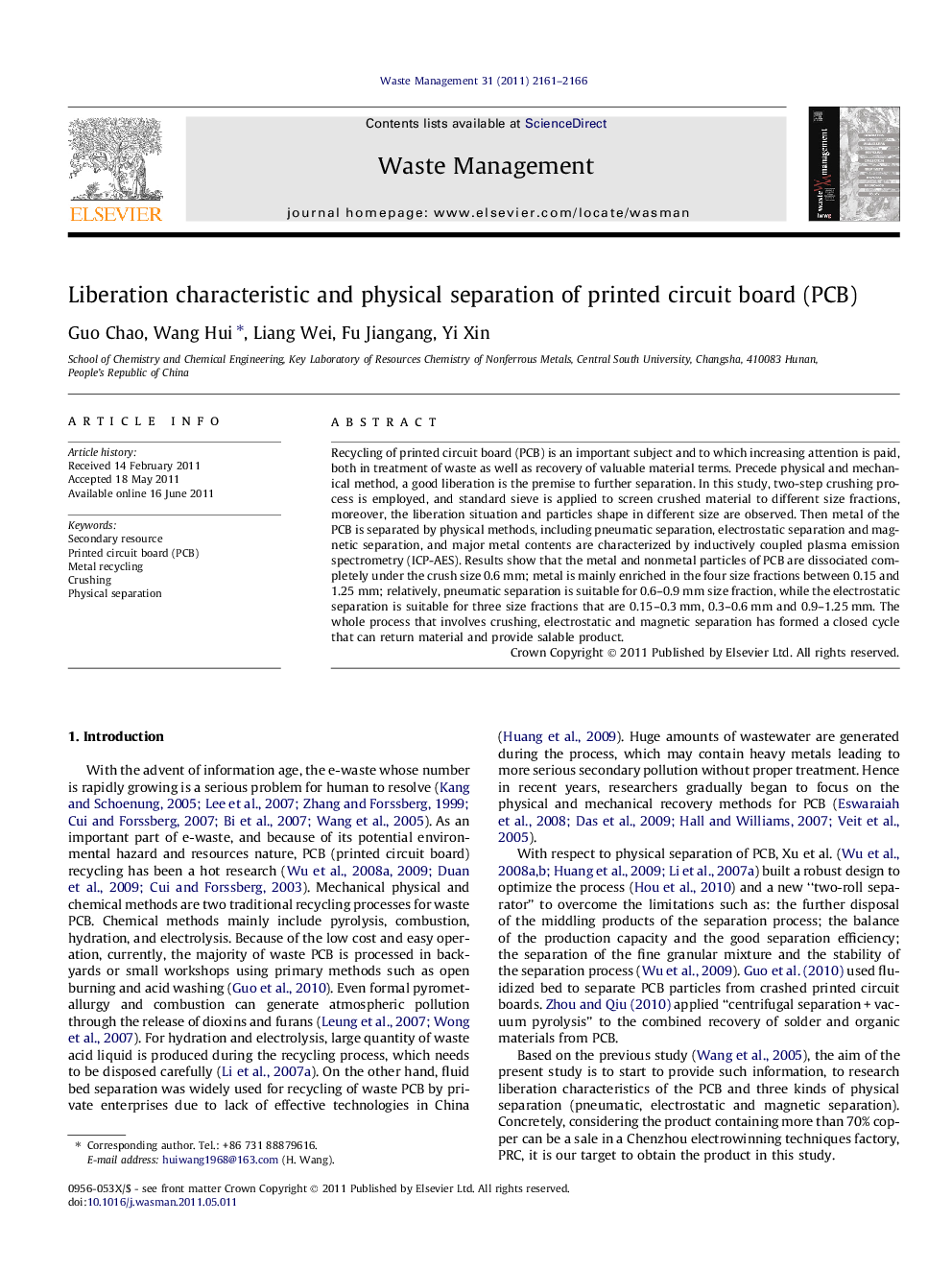| Article ID | Journal | Published Year | Pages | File Type |
|---|---|---|---|---|
| 4472392 | Waste Management | 2011 | 6 Pages |
Recycling of printed circuit board (PCB) is an important subject and to which increasing attention is paid, both in treatment of waste as well as recovery of valuable material terms. Precede physical and mechanical method, a good liberation is the premise to further separation. In this study, two-step crushing process is employed, and standard sieve is applied to screen crushed material to different size fractions, moreover, the liberation situation and particles shape in different size are observed. Then metal of the PCB is separated by physical methods, including pneumatic separation, electrostatic separation and magnetic separation, and major metal contents are characterized by inductively coupled plasma emission spectrometry (ICP-AES). Results show that the metal and nonmetal particles of PCB are dissociated completely under the crush size 0.6 mm; metal is mainly enriched in the four size fractions between 0.15 and 1.25 mm; relatively, pneumatic separation is suitable for 0.6–0.9 mm size fraction, while the electrostatic separation is suitable for three size fractions that are 0.15–0.3 mm, 0.3–0.6 mm and 0.9–1.25 mm. The whole process that involves crushing, electrostatic and magnetic separation has formed a closed cycle that can return material and provide salable product.
► Metal and nonmetal particles have been completely dissociated for the crushed PCB material in diameter that is smaller than 0.6 mm. ► Metal in PCB can be separated by physical method that involves crushing, electrostatic and magnetic separation. ► Copper grade does can be achieved to more than 71% by single electrostatic or electrostatic, magnetic combined separation.
